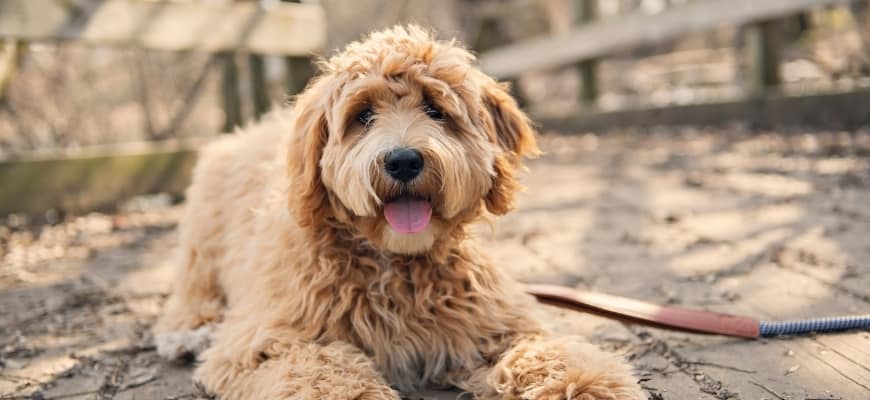If you’re bringing a new puppy or rehoming an adult dog from a shelter or rescue, it can feel like you’re welcoming a newborn baby into your life! Who knew that a dog could need so much kit or care?
Dog care is a complicated business that often seems like an overwhelming challenge at first. But we’re here to help you safely negotiate those tricky first few months with our comprehensive dog care 101 guide.
Keep reading to learn everything you need to welcome a furry friend into your life.
General Dog Care
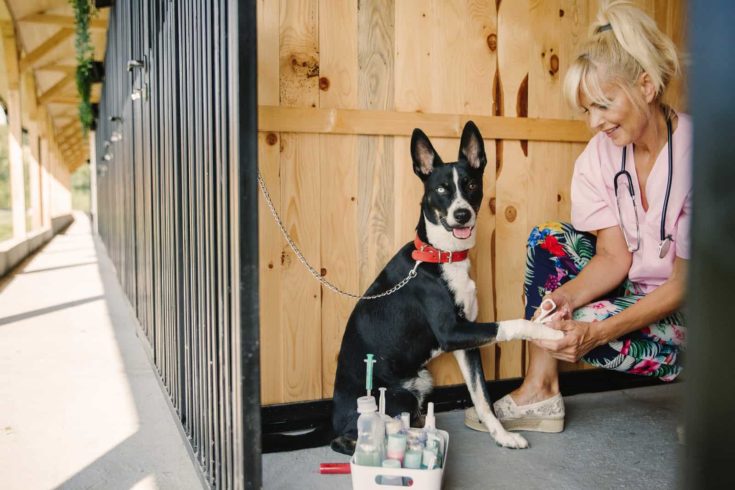
In this first part of our guide, we discuss every dog’s general care needs. There’s no doubt that these are high-maintenance pets! But the love, loyalty, and fun you’ll have together will make all the hard work and effort worthwhile.
A dog’s basic care needs include the following:
- Food and water
- Shelter
- Space
- Housing
- Licensing
- Exercise
- Grooming
- Training
- Health Care
Let’s discuss each of these factors in more detail.
Handling Your Dog
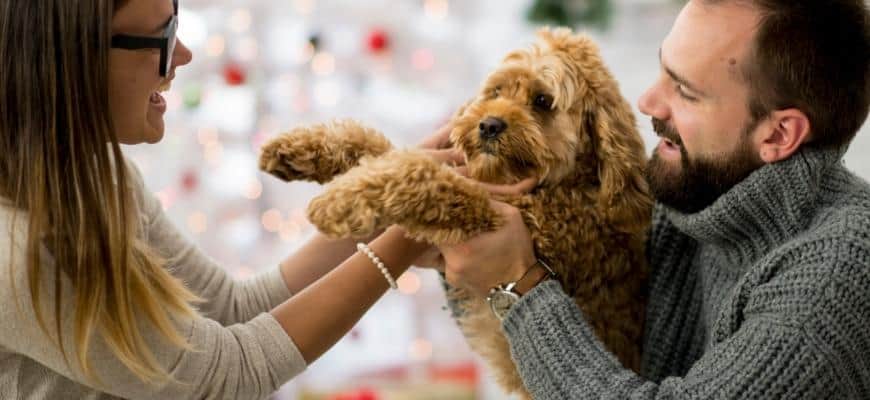
First of all, we should look at how you should handle a puppy and an adult dog.
There will be occasions when you need to lift your puppy and carry him.
- To safely carry a puppy or a small adult pup, place one hand under the dog’s chest between his front legs.
- Have your other hand or your forearm support the dog’s rump and hind legs.
- When lifting a large dog, do so from the underside, providing support to the dog’s chest with one arm and his backside with the other.
Never try to grab or lift a puppy or small dog by his tail, scruff of the neck, or forelegs.
Water
The first thing to note is that dogs and puppies must have access to clean, fresh water 24/7/365.
Ideally, you should use a ceramic or stainless steel water bowl. Plastic bowls are easily scratched and can harbor bacteria. If your dog is crated, use a specially designed-crate water bowl or a water bottle.
Food
A regular feeding routine is important for all dogs. That gives the pup the feeling of security that comes with knowing when he will be fed regularly.
How Many Times A Day Should You Feed A Dog?
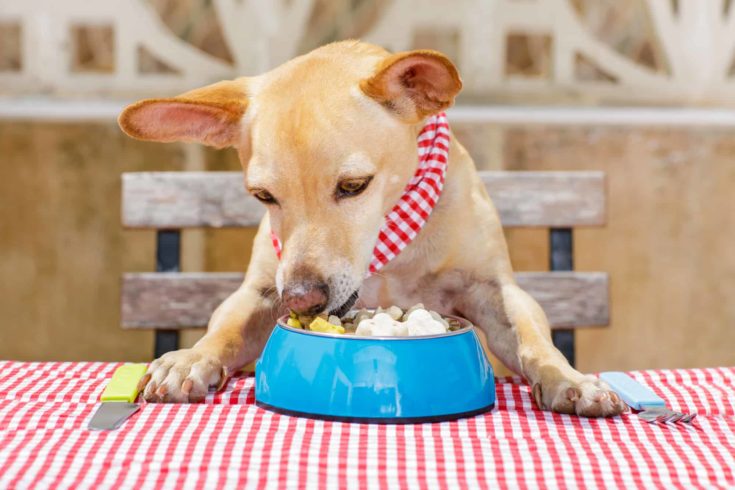
- Puppies of eight to 12 weeks need four meals daily.
- Puppies of three to six months need three meals daily.
- Puppies of six months to one year need two meals daily.
Once your dog reaches his first birthday, one meal daily is generally sufficient. However, larger dogs, or those that are prone to bloat, typically do better when fed two smaller meals a day.
What To Feed
Your adult pets need a well-balanced diet that provides them with the protein, fats, and fiber they need to be healthy. High-quality commercial dog food contains everything your dog needs for his daily food intake.
If you have a puppy, choose a puppy food that’s formulated to aid a puppy’s healthy growth and development. Senior dogs should receive suitable food for an elderly pup’s needs.
Ideally, you should feed your dog dry biscuits (kibble). Crunching on the kibble helps to clean bacteria and plaque from your dog’s teeth, whereas wet food does not. That said, old dogs with missing teeth and teething puppies with sore gums can be fed wet, canned food.
What About Human Food?
Dogs can eat some human foods, such as vegetables, fruits, and cooked eggs. However, that shouldn’t make up more than 10% of the dog’s daily diet.
Some human foods are toxic to dogs, so it’s best to stick to rewarding your pup with high-quality, nutritious dog treats or pieces of cooked chicken instead.
What Food Cannot Be Given To Dogs?

Some foods are toxic to dogs and will make your pet sick if he ingests them. Those foods include:
- Raisins
- Grapes
- Chocolate
- Avocado
- Alcohol
- Blue cheese
- Bread dough (swells inside the dog’s stomach, causing bloat)
- Bones (can splinter and present a choking hazard)
- Macadamia nuts
- Moldy foods
- Onions
- Garlic
- Xylitol (artificial sweetener)
When you want to give your dog a treat, we recommend that you use proper dog treats rather than offering your pet human food.
Poison
There are several foods, household items, and commonly used products that are toxic to dogs.
Alcohol
Dogs are sensitive to a substance called ethanol that’s found in alcohol. If your furry friend gets into your drinks cabinet, he could suffer from seizures, coma, and low blood sugar.
Blue Cheese

Most blue cheese contains roquefortine C, which is produced by the fungus that manufacturers use to make the cheese.
Dogs are highly sensitive to roquefortine C and suffer seizures and muscle tremors if they ingest blue cheese.
Bread Dough
If you’re a home baker, take care that your pup can’t get his gnashers into any raw bread dough. The dough contains live yeast, which causes the dough to swell when it gets warm.
That can cause a potentially fatal condition called bloat. Yeast also produces alcohol that contains ethanol, which is also dangerous to your dog, as mentioned above.
Chocolate
Chocolate, especially dark chocolate, is highly toxic to pets, including dogs, thanks to the chemical called theobromine that the sweet treat contains.
Theobromine poisoning causes vomiting, diarrhea, overexcitement, and heart damage.
Macadamia Nuts
Macadamia nuts are toxic to dogs. However, the effects of eating the nuts are relatively mild and usually disappear within 48 hours.
Mold
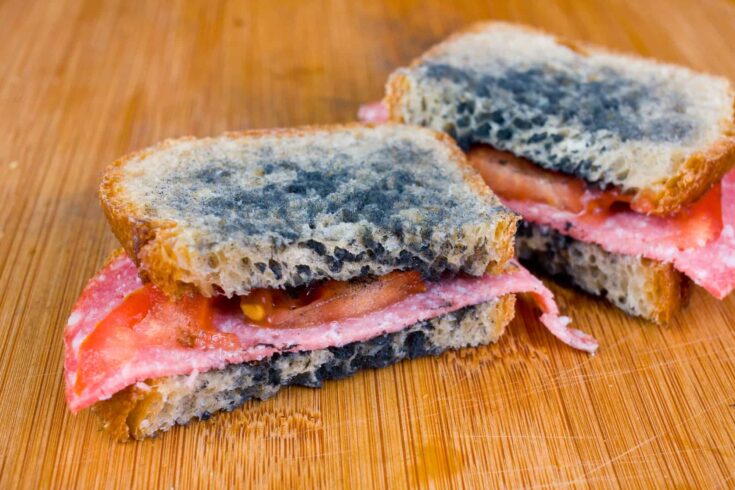
Certain species of mold are toxic to dogs and can make your pup sick. Keep any leftover foods safely packaged and dispose of them in a trash can that your dog can’t get into.
Alliums
Garlic, garlic supplements, onions, chives, and shallots all contain a toxic substance that can cause severe anemia if your dog eats it.
Eating alliums causes stomach upsets and discolored urine in dogs. However, these effects usually pass within a couple of days.
Vine Fruits
Vine fruits, such as grapes, raisins, currants, etc., are highly toxic to dogs.
Dogs that have ingested the fruit or fruit cake often suffer from tummy upsets. However, in severe cases, other dogs can suffer kidney failure.
Sugar
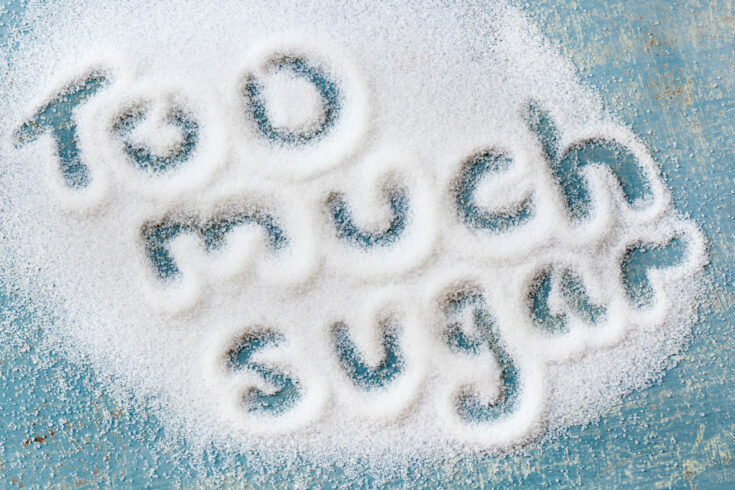
Eating lots of sugar can cause pancreatitis in dogs, potentially leading to organ failure in severe cases.
Xylitol
Xylitol is an artificial sweetener that you find in sugar-free sweets, nicotine replacement gums, and some medicines.
Xylitol causes low blood sugar and liver failure and can be potentially fatal to dogs.
Vitamin Supplements
It is possible to poison your dog by giving him excessive amounts of certain vitamin supplements, including Vitamin A and Vitamin D.
Hypervitaminosis can cause brittle bones, kidney failure, dense bones, and soft tissue calcification.
Household Cleaning Products
Many ordinary household cleaning products, washing cubes, cosmetics, and human medicines can be toxic to dogs.
Be sure to keep your cleaning stuff and medication in a locked cupboard that’s well out of reach of your curious canine.
What To Do If Your Dog Eats Something Poisonous
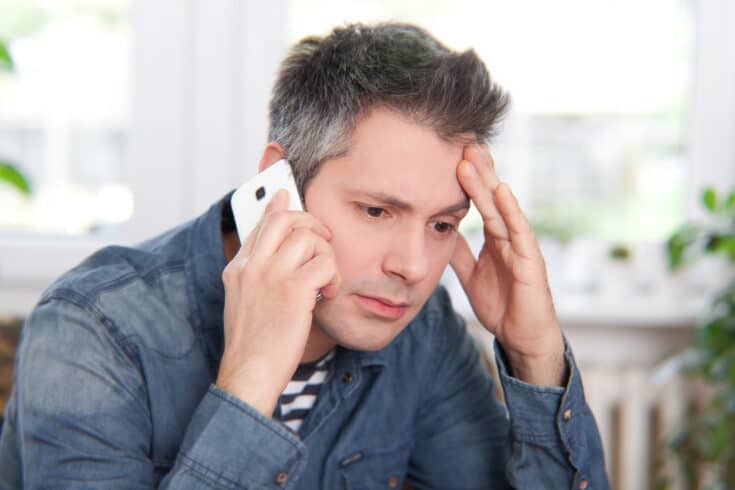
If you think your dog has eaten a poisonous substance or food, contact your vet right away. Alternatively, contact the ASPCA Animal Poison Control Center at (888) 426-4435.
Outdoor Shelter
Even if your dog enjoys spending time outside, you should provide him with shelter from the elements.
That shelter could be a comfortable kennel or a run with access to shade and protection from the wind, snow, and rain.
Space
Dogs are naturally denning animals that appreciate their own space in your home.
If you choose to crate train your dog, a comfortable, well-equipped crate can be a cozy den where your dog can retreat in times of stress or simply when he wants somewhere to enjoy his downtime.
Alternatively, your dog should have a comfy bed in a quiet spot where he can rest undisturbed whenever he wants to.
Housing
As mentioned above, dogs need somewhere warm, quiet, and safe where they can rest during the day and sleep at night. The ideal solution that fulfills those requirements is a crate.
There are various kinds of crates that you can choose from, including:
- Wire mesh training crates
- Furniture crates
- Soft-sided fabric crates
- Plastic crates can also be used for travel
Fit the crate with a comfortable mat or pad and a few clean, fleecy blankets. The crate should have a water bottle or crate-specific water bowl, toys, and a cover to provide your pet with the ultimate denning feel.
Put the crate in a quiet spot that’s out of drafts and away from direct heat sources. Although your dog might want to be the center of attention, he still needs peace and quiet sometimes, so make sure that you don’t put the crate in a high foot traffic place.
Exercise
Regardless of your dog’s age, size, or breed, the benefits of exercise for your canine companion cannot be overstressed.
Exercise keeps your dog mentally and physically happy and can help to prevent undesirable behaviors, such as barking and destroying things.
Is It Okay To Not Walk Your Dog Every Day?
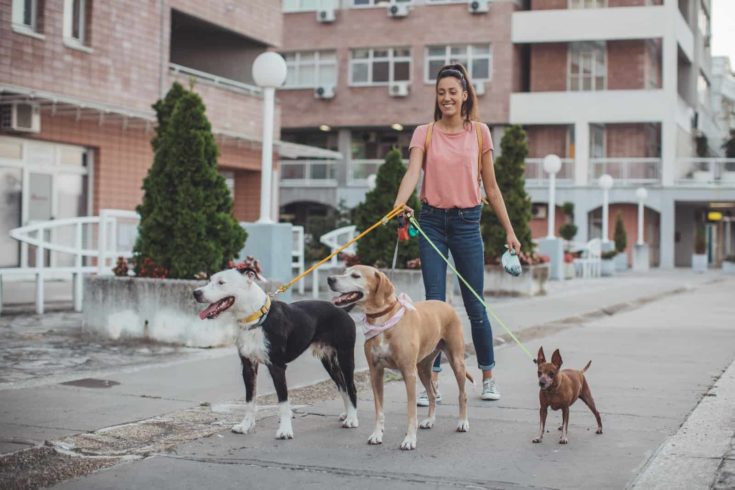
All dog’s individual exercise levels vary somewhat, so before buying or adopting a dog, check how much exercise the pup will need and be sure that you can honestly say you can provide that for your furry friend.
All dogs, regardless of their age, breed, and size, need some form of daily exercise to remain healthy and mentally happy.
Exercise can take many forms. For example, a trip to the dog park, regular walks around your neighborhood, a game of fetch or tug-of-war in your backyard, or a training session in your local park all count as suitable forms of exercise for your dog.
Mental Stimulation
Dogs are intelligent creatures that can become bored quickly if not provided with sufficient mental stimulation. Boredom and frustration lead to behavioral problems, such as excessive barking, destroying their bed or your stuff, and even self-mutilation.
To ensure your dog’s emotional health and happiness, provide your furry friend with plenty of interactive toys or another dog as a companion to keep him mentally stable and happy. That also provides your dog with valuable extra exercise.
Grooming
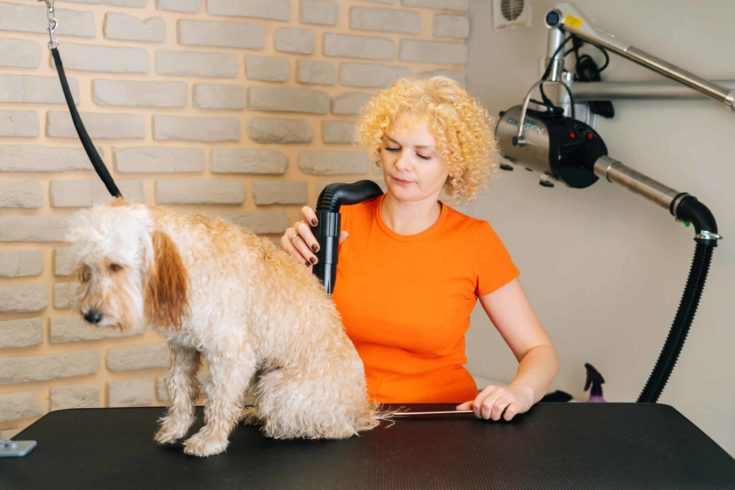
All dogs need brushing and grooming. Of course, if you opt for a short-haired type or a non-shedding breed, you won’t need to do quite as much daily brushing as you would if you bring home a long-haired, double-coated hound.
However, all dogs need brushing, occasional bathing, their nails clipped, and ears cleaned. Some owners opt to have their dog’s fur clipped or shaved, either at home or by a pro groomer, which incurs a cost every six weeks or so.
You can take the DIY route if you have a cooperative dog and clip him yourself with a decent set of dog clippers.
How Often Should You Bathe Your Dog?
Home bathing is also possible, but you must use a proper dog shampoo since human beauty products are too harsh for a dog’s sensitive skin.
How often you bathe your dog depends on how dirty he gets while out on walks. Ideally, you should only bathe your dog every four to six weeks. If you bathe your dog too frequently, you risk dehydrating his skin and removing the natural oils it produces, which give your pet’s coat its natural shine.
Training
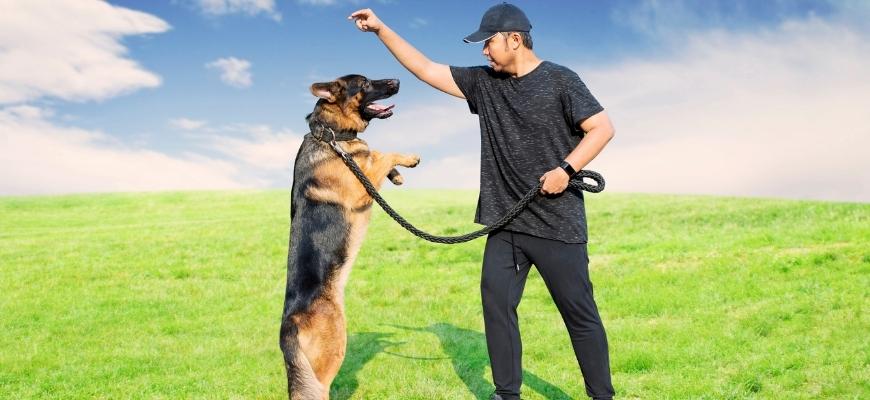
Training a puppy or dog should begin on day one. Basic obedience training and house training are essential for a harmonious home. And nobody wants to own a bad-mannered, disobedient dog that they can’t take out in public for fear of the pup misbehaving.
The key to all training is to use positive reinforcement techniques rather than punishment. Punishing your dog for “getting it wrong” never works in the long term, and you risk damaging the trust that you’re working to build between you and your furry friend. In fact, many experts recommend that dog owners attend obedience classes with their pups to strengthen the bond and build trust between both parties.
The crucial thing about any form of training is to be consistent. So, make sure that your family understands the house rules you’ve set for your dog and stick to them.
Licensing & Identification
In most US states, it’s a legal requirement to have your dog licensed. If you don’t have a license for your pet and you get caught, you’ll be slapped with a large fine.
You must renew your dog’s license every year. The cost of the annual license fee goes toward the upkeep of animal shelters and rescues, helping to get stray dogs off the streets and house them until their forever home is found.
Cost of Licensing
The average cost of an annual dog license is between $10 and $20. Note that if you don’t have your dog neutered or spayed, you can expect to pay more.
In some cases, you might be eligible for a cheaper license fee:
- Service dogs, signal dogs, and guide dogs are usually free to license.
- Some US states provide a discounted rate “lifetime license.” That’s a one-off payment that covers the dog for its whole life.
- If you own multiple dogs or you’re a licensed breeder, you might be eligible to apply for a “kennel license.”
The cost of licensing your dog every year is much less than the fine you’ll receive if you don’t!
You can get your dog license at your local city County Licensing Department or by mail. Renewals can usually be done online.
What Do You Need To Get A Dog License
To apply for a dog license, you’ll need the following:
- A current rabies vaccination certificate for your dog.
- Your puppy must be over four months old.
- If you move home to a different city, you might need a new license.
Once in possession of your dog’s license, you must attach it to your pet’s collar, together with his ID and rabies tags.
Dog Health Care Tips
Most dogs are generally pretty healthy animals and provided you care for your dog properly, your pup shouldn’t have any serious problems.
However, there are several things for responsible pet parents to know regarding their pampered pooch’s healthcare.
Dentition and Oral Care Tips
One of the most overlooked aspects of dog care is your pup’s oral health and dental care.
Even though dogs don’t eat sugary foods, they can still suffer from tooth decay. In fact, gingivitis and canine periodontal disease are serious problems affecting many pups. But these painful conditions can be prevented if you pay attention to your dog’s teeth.
Daily teeth brushing using a special dog toothbrush and toothpaste is essential for your dog’s overall health. In addition, feed your dog hard kibble and provide your pup with lots of dental treats that help remove bacteria that will ultimately form plaque.
Have your dog’s teeth checked and professionally cleaned regularly by your vet, and inspect your dog’s mouth daily to ensure his tongue and gums are a healthy color.
Signs of tooth pain and poor oral health in dogs include:
- Bad breath
- Difficulty chewing food
- Digestive health problems
- Reluctance to eat
- Teeth chattering
- Bleeding from the mouth and gums
- Pawing at the face
If your dog shows any of these signs, book a veterinary appointment immediately.
Paws
If you think about it logically, a dog’s paws are vulnerable to damage, given the wear and tear they go through.
In hot weather, a dog’s paws can be scorched on hot sand or a blistering sidewalk, and in winter, a pup’s pads are vulnerable to the freezing effects of ice and snow. In addition, your dog can get a lot of much caught in between their toes and in cracks in their pads.
So, you need to keep your dog’s paws clean. Dog booties are a good option. My dog had a recurrent problem with her paws becoming infected if they came into contact with mud or sand. The only effective way of preventing that was to have Jess wear booties whenever we went outside. Once she got used to them, the booties solved our problem.
To help prevent paw health conditions, you can wash each of your dog’s paws with warm water and a pet-friendly soap or use a product such as the MudBuster Paw Washer.
Healthy Joints
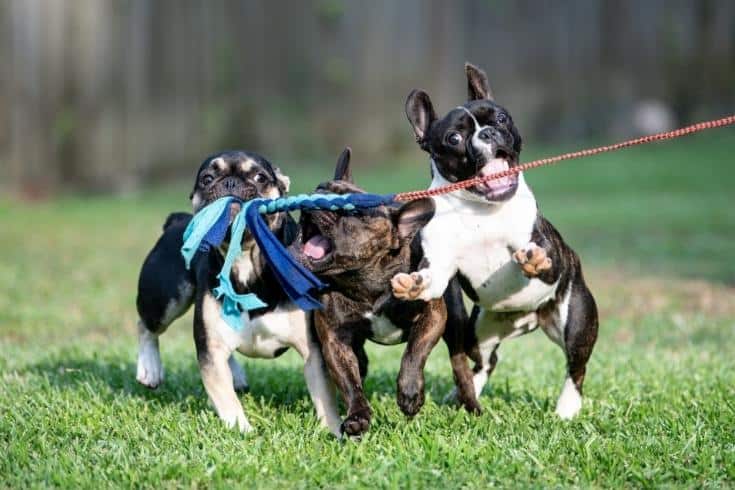
From day one, your puppy will spend lots of time running, jumping, and playing. That has a big impact on the pup’s joints.
You can help to protect your dog’s joints by feeding him a nutritional joint supplement, such as glucosamine and turmeric. You can also improve your dog’s joint health and relieve pain by giving your dog CBD oil.
Maintaining a joint care regimen can help to protect your pup from the discomfort and debilitating effects of arthritis in older life.
Arthritis, hip dysplasia, and other health conditions can affect any dog. However, some breeds are more susceptible to developing those health issues than others, including German Shepherds, Labrador Retrievers, and Golden Retrievers.
Medication
If your dog develops health issues, and you have to give medicines to your pup, follow the dosage instructions in the letter. Do not overdose on the medication, and consult your vet for advice if you’re not sure how much to give your dog.
Poison!
Many human medicines are highly toxic to animals and can prove fatal if ingested. So, be sure to store all your medicines well out of the reach of your dog.
The same applies to cleaning products, certain plants, and some human foods (as mentioned earlier). Take care to keep all toxic items well away from your pet in a locked cupboard or secure container that your dog can’t get into.
Check your garage and garden shed to ensure that any weedkiller, pest control products, motor oils, and antifreeze are locked safely away from your dog.
If you suspect that your dog has ingested a toxic substance, call your vet immediately, or contact the ASPCA Animal Poison Control Center at (888) 426-4435.
Visiting Your Vet
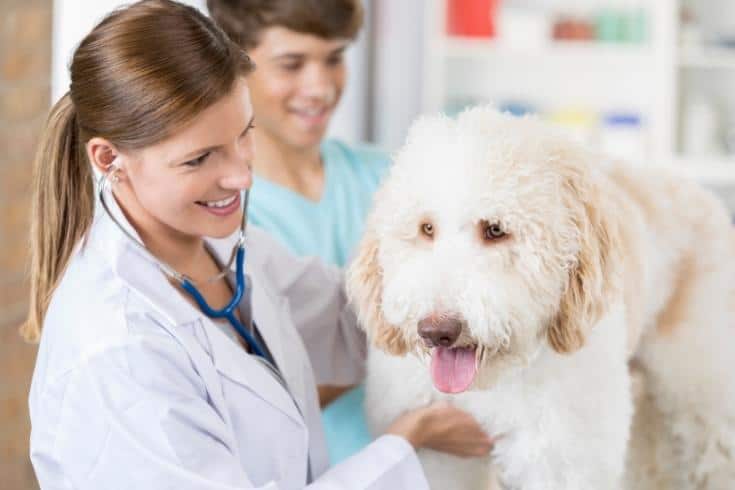
It’s critical that you regularly take your dog to visit a good veterinary practice, even if your pet isn’t sick or in need of medical care.
Your vet will provide your dog with essential vaccinations, deworming, tick and flea prevention, as well as dental care and teeth cleaning. The vet will also give your dog a thorough health check every year.
You can also ask your vet for advice on the best diet for your dog and general helpful health tips.
Is Your Dog Healthy and Happy?
There are certain signs that all is not well with your dog, and you should be familiar with what to look out for.
Signs that something is brewing include:
- Lethargy
- Loss of appetite
- Diarrhea
- Vomiting
- Lack of interest in toys, walks, and life in general
If you’re at all concerned about your dog’s health and overall well-being, always ask your vet for advice on canine care.
Desexing – Neutering & Spaying
Sadly, there are thousands of unwanted dogs and puppies in shelters and rescues across the country all awaiting their forever homes.
Having your dog or puppy desexed can prevent more unwanted puppies from being born. In fact, many reputable breeders insist that buyers sign a contract stating that they will have their puppy desexed and will not breed from it.
- Female dogs can be spayed once they have had their first season, usually between five and ten months of age.
- Male dogs are generally neutered once they are mature enough that both testicles are fully descended. That can be anywhere between six months and one year old.
- Smaller dog breeds can generally be neutered earlier than larger pups.
The desexing procedure is pretty straightforward. Male dogs typically recover within a few days, whereas female dogs take a week or so to get over the surgery.
During the dog’s recovery period, the pup should be provided with a warm, cozy spot in which to rest, and exercise should be kept to a minimum. Female dogs are usually restricted to a gentle leash exercise at first to prevent damage to their stitches.
Caring For A Pregnant Dog
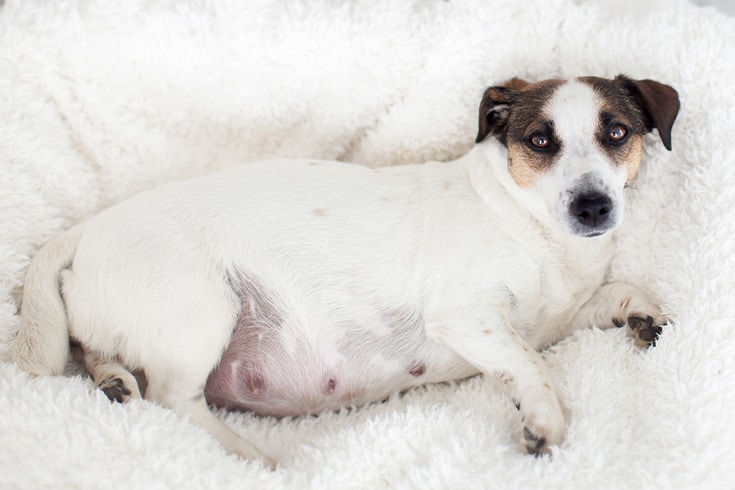
Some more experienced dog owners like to breed from their dogs. However, unless the pregnancy is complicated, pregnant dogs are typically able to manage without your intervention.
Basically, you need to provide your dog with a well-balanced, high-quality diet and ensure that she gets enough exercise. A short walk every day starting from the 30th day of the pregnancy is generally sufficient to keep your dog healthy and happy. That said, if you have a very lively pup, extra walks might be necessary to keep her happy.
Of course, regular veterinary checkups are essential throughout the pregnancy.
Whelping
Your dog’s natural instinct will most likely take over when it comes to giving birth to the puppies and caring for them. Generally, all you need to do is observe your dog throughout the delivery and provide somewhere warm, cozy, and quiet where mom and her puppies feel safe and comfortable.
Sometimes, complications can arise. If the dog’s labor lasts for more than 24 hours without any puppies or the mom appears very lethargic or vomits, seek veterinary advice right away.
Caring For Dogs In Heat
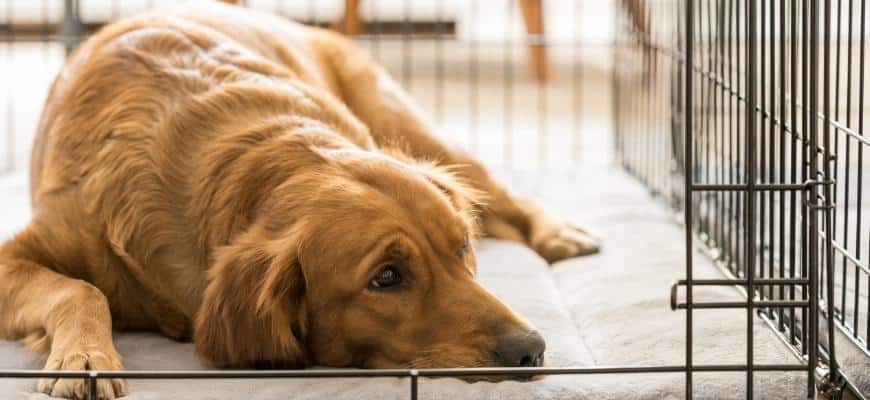
How female dogs react when in heat depends on the individual dog. Some dogs are lazy and lack energy, whereas others can become agitated to the point of hyperactivity.
When a female dog is in season, the most important thing is that you keep her restricted to leash walks while exercising and avoid contact with unneutered male dogs. Be careful that your backyard is securely fenced so that your dog can’t escape and that male dogs can’t get in and hassle her.
Female dogs typically come into season twice every year, with each cycle lasting around three to four weeks. During the first two weeks, the dog usually bleeds. At that time, you might want to keep your dog off your furniture or use doggie diapers or pants.
Occasionally, unspayed female dogs can have a false pregnancy where they begin “nesting” and might even produce milk. In that case, contact your vet who will give your dog an injection to correct her condition and return things to normal.
Elderly Dog Care Routine
Senior dogs have their own particular requirements, so if you take on an older pup, you’ll need to know what to expect when it comes to geriatric dog care.
Diet
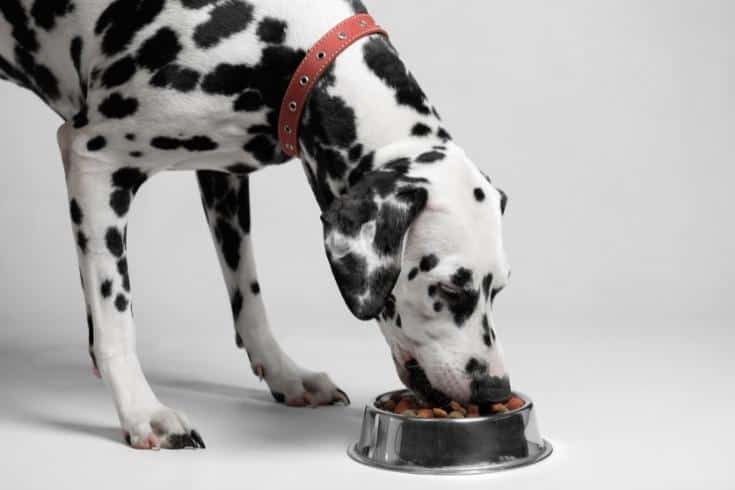
Older dogs aren’t as physically active as younger pups, so they can be prone to gaining weight.
Obesity in dogs leads to health problems, including diabetes and joint pain, so it’s essential that you don’t overfeed your aging pup. Senior dogs can also sometimes suffer from a sensitive stomach, so it’s important that you give your oldie a suitable diet that’s specially formulated for older dogs.
If you’re not sure what to feed your senior pup, ask a vet for advice.
Exercise
Senior dogs still require some daily exercise for their mental and physical well-being.
That can mean shorter walks and less energetic playtime. Be guided by your dog’s needs, and don’t push him to exercise when he’s clearly had enough.
Grooming
An older dog’s coat and skin can lose their condition, so it’s your job to keep on top of brushing and grooming your pet to prevent matting and the formation of scaly, dry skin.
Oral Hygiene
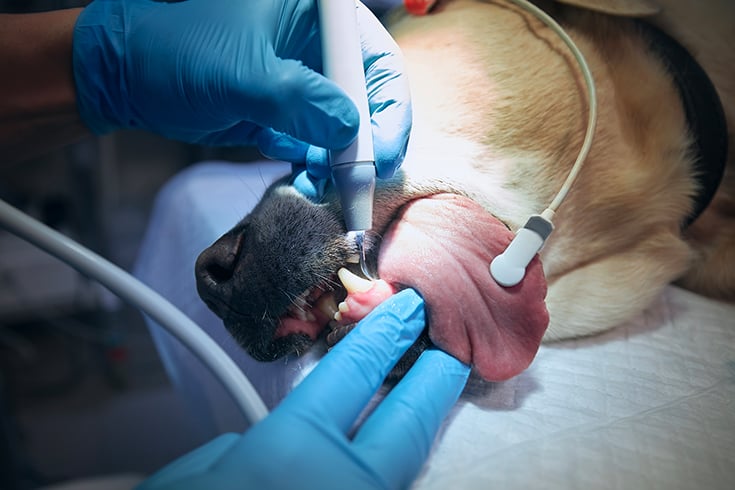
Elderly dogs often lose a few teeth and can be prone to gum disease. Be sure to clean your dog’s teeth every day and take him to your vet for professional teeth cleaning at least every 12 months.
Comfort
Elderly dogs can suffer from joint pain and stiffness. So, you might want to swap your dog’s bed for an orthopedic one that provides more support for your pet.
Make sure that the bed is easy to access and ensure that your dog’s food and water bowls are in a spot that’s easy to get to.
Senior dogs often lose their hearing and eyesight, so be patient and sympathetic to your dog and always make allowances for his advancing years.
FAQs
In this part of our guide, we answer some of the commonly asked questions about dog care.
Q: Is dog care easy?
A: Dogs need exercise, training, grooming, and veterinary care. In addition, your dog will demand your love, attention, and care 24/7/365. Puppies and senior dogs need more care than younger adults. For some people, that will be too much of a commitment and responsibility, whereas other pet parents love every moment.
Q: How long can you leave a dog home alone?

A: Adult dogs can be left alone for up to a maximum of eight hours. Puppies should not be left alone for more than a couple of hours maximum, depending on the age of the puppy. Provide your pet with some interactive toys or company to prevent him from becoming bored while you’re away.
If you’re going to be away from home for more than a few hours, it’s better for your dog to arrange for someone to call in and let him outside to relieve himself.
Q: How can I stop my dog’s diarrhea quickly?
A: Most dogs suffer from bouts of diarrhea from time to time. The first thing you need to do is prevent your dog from becoming dehydrated. So, provide your pet with plenty of clean water to drink.
Fast your dog for 24 hours before gradually reintroducing solid foods. Bland food, such as poached chicken and rice, can be a good starting point, provided that your dog isn’t sensitive to chicken.
Your vet will recommend suitable medication to help your dog’s recovery. If your dog is also vomiting or diarrhea persists for more than a day, consult your vet.
Q: What happens if my dog doesn’t pee all day?

A: Urinary retention can be a serious condition that causes bacteria and toxins to accumulate in the dog’s urine. That can cause bladder stones to form and weaken the bladder’s muscles. In very rare cases, bladder cancer can result.
So, if you notice that your dog hasn’t peed all day or you think that your pet might have a UTI, take your pet to the vet without delay.
Owning a dog is a massive responsibility, and you can see that there are many aspects of care to bear in mind. Among other things, dogs need food, water, shelter, training, veterinary attention, exercise, and grooming. You also need to license your dog, have him vaccinated, and know the signs of ill health to watch out for.
Our Articles on Dog Care
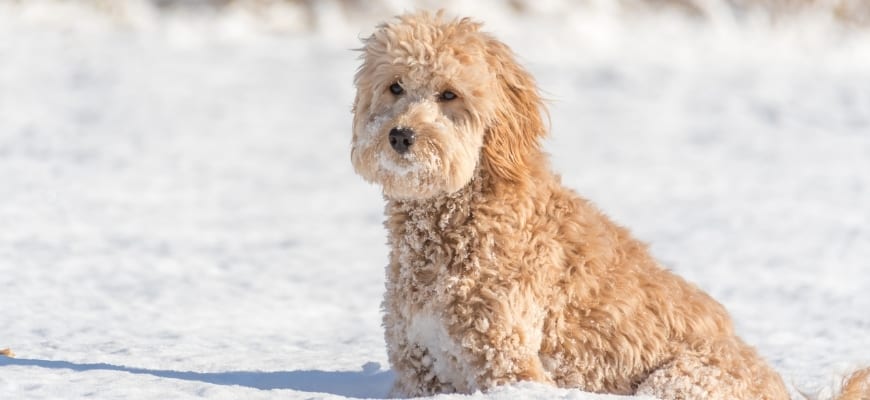
Mini Goldendoodle Facts – Cost, Lifespan, Size, and Care
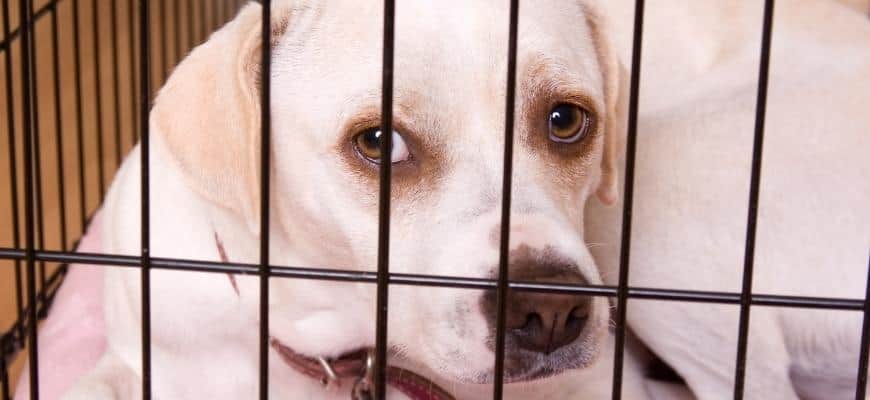
Dealing With Dog Separation Anxiety – Using Crates As A Safe Space

Goldendoodle Matted Fur: Guide To Detangling And Prevention
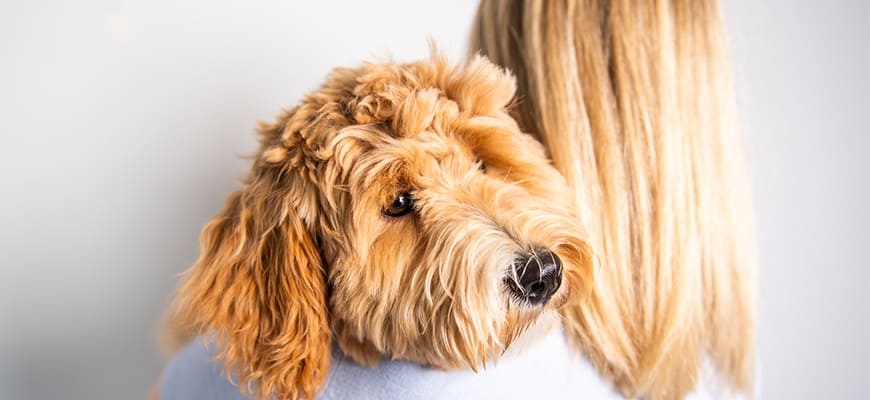
13 Common Goldendoodle Health Issues, Treatment And Prevention

A Guide To Straight Hair Goldendoodles
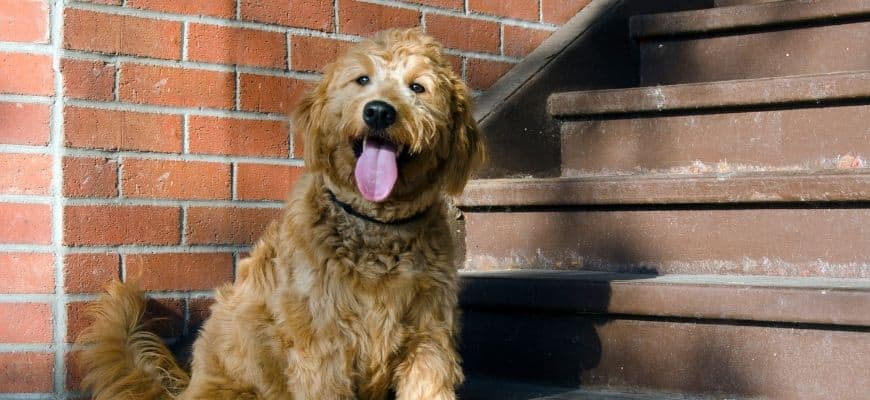
Australian Goldendoodle – Price, Size, And Other Breed Information
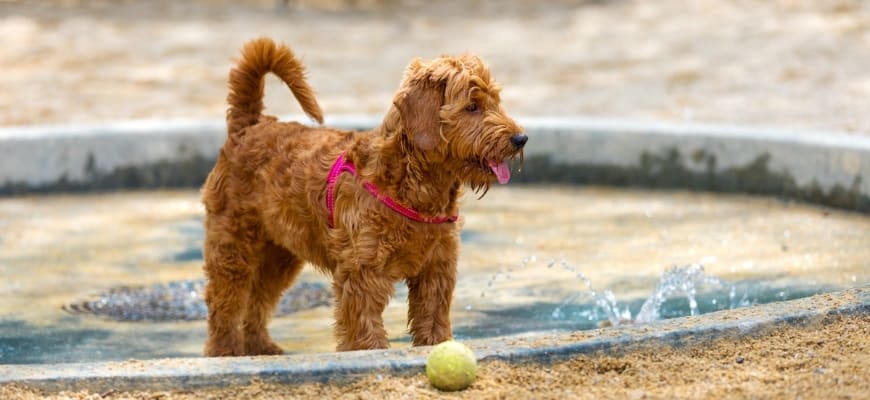
Teacup, Toy, or Mini Goldendoodle – Size, Weight, and Care
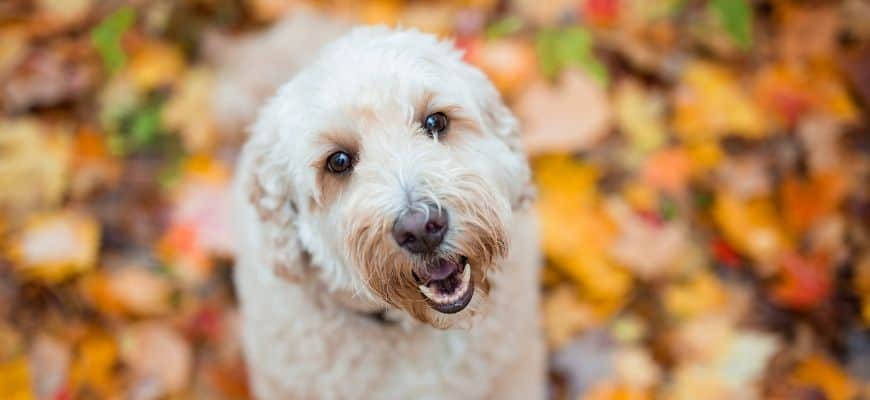
English Teddy Bear Goldendoodle – Everything You Need To Know
